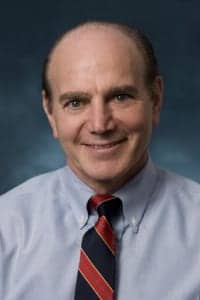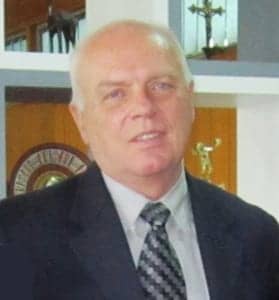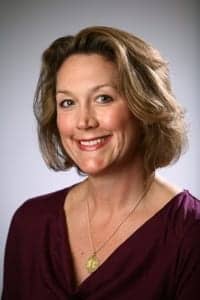The Healthcare Technology Foundation (HTF) is a relatively new organization, having been founded in 2003. As a foundation, it’s unlike the regional and national associations with which many biomedical engineers and technicians are familiar in at least one respect: There is no membership. The foundation is simply composed of a board of directors.
That isn’t to say, however, that others in the field shouldn’t pay attention to the HTF or that they aren’t affected by what the organization does. The HTF helps support, fund, and direct research projects and programs, especially those regarding patient safety. After a decade of work, the foundation aims to grow in its capacity of facilitator and enabler during the next decade.

From the outset, HTF didn’t have a particular agenda or list of issues it wanted to promote. Instead, David says, the vision was to create a resource for those in the field to stimulate practice review and to offer help when it had ideas it wanted to realize. David says the group understood early on that its success would depend on collaboration.
In fact, because it doesn’t have a membership, the very essence of the group is to be a vessel in which collaboration can occur. Manufacturers were a key component to this collaboration. They not only could help fund some of the projects, but they also represented an important part of the equation—the technology. David recalls, “I went to a couple manufacturers and said, ‘Look, you are putting technology at the point of care, and we are the ones at the point of care. Let’s do some data collection and see what issues we can come up with.’ ”
Initiatives

The HTF is actively partnering with a number of organizations on the alarms issue. One partnership is with the American Association of Respiratory Care. The two organizations will look at alarms related to respiratory care. In another partnership, AAMI will co-sponsor a session at the National Patient Safety Foundation Congress in May. And HTF and ACCE will support a webinar on Alarm Management.
Another topic on which the HTF has focused during its inaugural decade is patient education for technology in the home. Jennifer Ott, CCE, project manager at Northstar Management and secretary at HTF, was one of the past ACCE presidents who helped found HTF. She says she anticipates work and research in this area to grow as more and more people receive at-home care and help monitor various technologies for themselves or family members. “Some of the materials provided by the manufacturers can be overwhelming,” she says. “What we try to give is a general overview, high-level information.”

The Next Big Thing: Medical Device Integration
The HTF is beginning a new joint education project with AAMI, which will likely develop into one of the foundation’s leading areas of expertise, along with alarms and at-home devices. The project, led by David, will investigate how to best manage the risks of integrated systems and networks. “This came about as the result of our strategic planning meetings,” Clark says. “A lot of ideas were discussed, but this came across as being one that had a definite need. The field wasn’t addressing risk management for integrated systems.”
David says that the HTF approaches topics from the perspective of someone who is at the point of care. The importance of this perspective is especially evident in light of the integrated device topic. “The FDA is looking at ways to improve patient safety and technology effectiveness at the point of care, but there are comparison challenges when they review the system versus when you are using it,” he says. “In practice, you buy a medical product, and then you buy another product that’s not regulated or controlled, like an iPhone, and connect them together. How do you control that? How do you study that? I think the commercial, regulatory, and hospitals are looking for a guide for how to bridge and safely manage these areas.”
In its role as the facilitator, the HTF can bring together members from across the industry—regulators, manufacturers, engineers, and others—and meld the multiple viewpoints into a more comprehensive study than if one party were to go it alone. In fact, the board of directors was designed to help HTF cast as wide a net as possible: members include academics, nurses, manufacturers, and engineers.
David says he also realizes that finding ways to ensure patient safety amid a world of increasing interconnectivity can’t come at the expense of stifling the new capabilities: “We can’t block these innovations; we need to help facilitate them.”
Looking Ahead
The HTF was originally called ACCE HTF, a nod to the group where the founders came from. In order to maintain its status as a 501 (c)(3) nonprofit group and continue its unique mission, which was separate from that of the ACCE, the name was streamlined. Early on, the HTF assumed the responsibility of administering the Clinical Engineering Certification Program from AAMI. Now, because of changes in IRS code for foundations, the HTF is looking to find a new home for the certification program. Clark cites this as HTF’s top priority for 2013, as the transfer is targeted early 2014.
In terms of long-term goals, Clark says he wants to further differentiate the HTF from other organizations in the field. “We see the safe and effective application of technology as being our focus, with an unfulfilled need for patient education.” He expects studies such as the medical integration study to help the group to stand out and programs such as the in-home technology education to become more and more recognized as that type of care expands.
David sees the HTF’s influence expanding, as stakeholders throughout the industry come to view it as a clearinghouse for what works and what doesn’t. “I see a tremendous potential for industry to attempt to develop better technology in a way that meets user ability, a better match between technology and clinical capabilities,” he says. He expects large manufacturers and regulatory agencies to contract with the HTF to examine how to better match abilities and technology, design, and regulation. However, much depends on how well the HTF can meet the challenge of raising funds.
According to Ott, the Healthcare Technology Foundation, having chosen a few specialized areas to support, is becoming known as an expert in those areas. The organization’s future, she says, depends on fostering relationships with other groups and societies to see what other topics they can help support. As more resources and a new curriculum begin to flow from the device integration program, expect the HTF to turn a few more heads.


